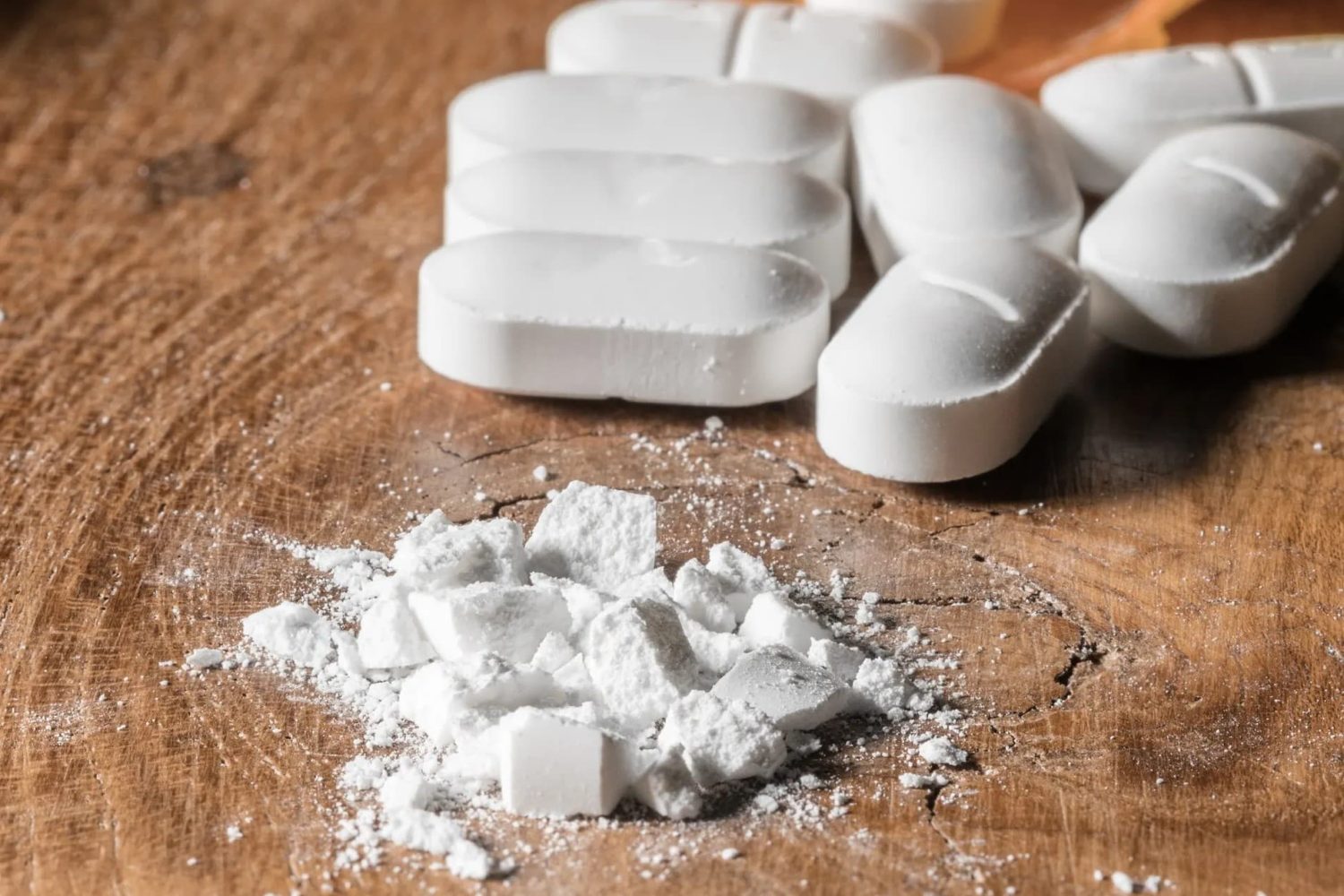
Ever had a tablet production run go wrong for no obvious reason? One batch flows like water, the next clogs your press or yields weak tablets. What gives? Often, the hidden cause is about how fine or coarse your powder is, aka the particle size.
In this post, we’ll talk about how particle size affects tablet compression. You’ll also learn why getting the “just right” particle size is crucial for smooth tableting. No heavy jargon—just simple analogies and practical tips for anyone looking to improve their tablet manufacturing process.
Why Particle Size Matters in Tablet Manufacturing
Have you ever baked a cake? Making tablets is a bit like preparing cake batter. The ingredients—the powder particles—need to mix, flow, and hold together just right.
Particle size refers to how big or small individual powders are.
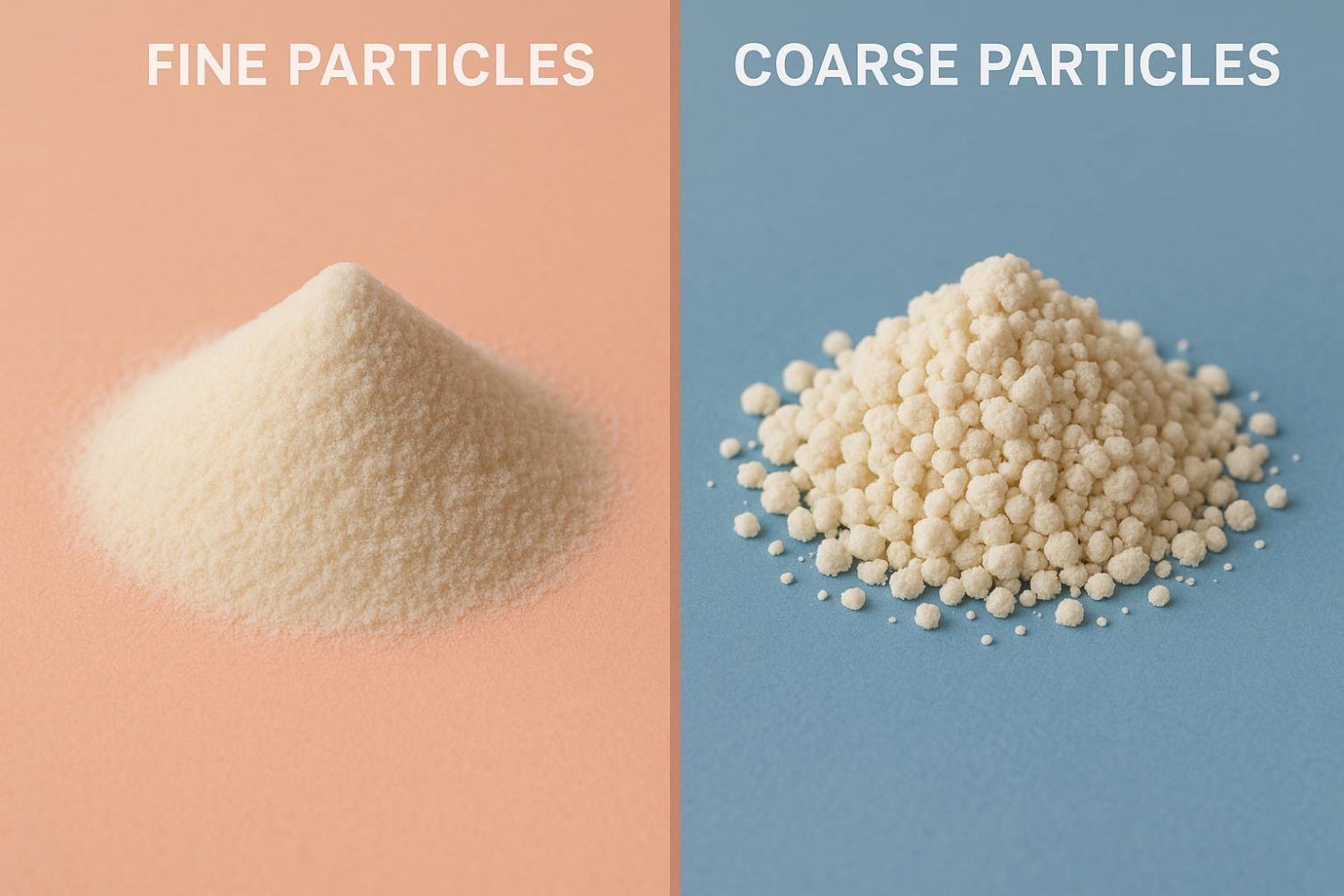
Fine Particles:
Like cake flour, when particles are too fine, they tend to clump and stick. That causes problems during tablet production:
- Poor flow into the die
- Inconsistent tablet weights
- Blockages or sticking in the hopper
Smaller particles do compress well, but their flowability is a challenge.
Coarse Particles:
Now imagine adding large sugar crystals or unmixed lumps into your batter. They move around easily but don’t blend well. In tablets, larger particles:
- Improve powder flow
- But may not compress tightly
- And can separate out, leading to inconsistent blends
Just like baking, you need the right mix. A good particle size distribution (PSD) ensures:
- Smooth flow through the press
- Even die filling
- Strong, well-formed tablets
The ideal particle size sits somewhere in the middle—not too fine, not too coarse. With it, the whole tablet-making process runs smoother—kind of like getting that perfect cake texture.
The Effect of Particle Size on Tablet Compression
Let’s break down how particle size really impacts tablet making. It all starts with two critical stages: how powders flow into the die and how they compress into a solid tablet.
Powder Flow: Fast, Even, and Predictable
To keep a pill tablet press machine running smoothly—especially at high speeds—you need your powder to flow quickly and evenly. Poor flow leads to problems like:
- Inconsistent fill weights
- Tablet weight variation
- Even machine stoppages
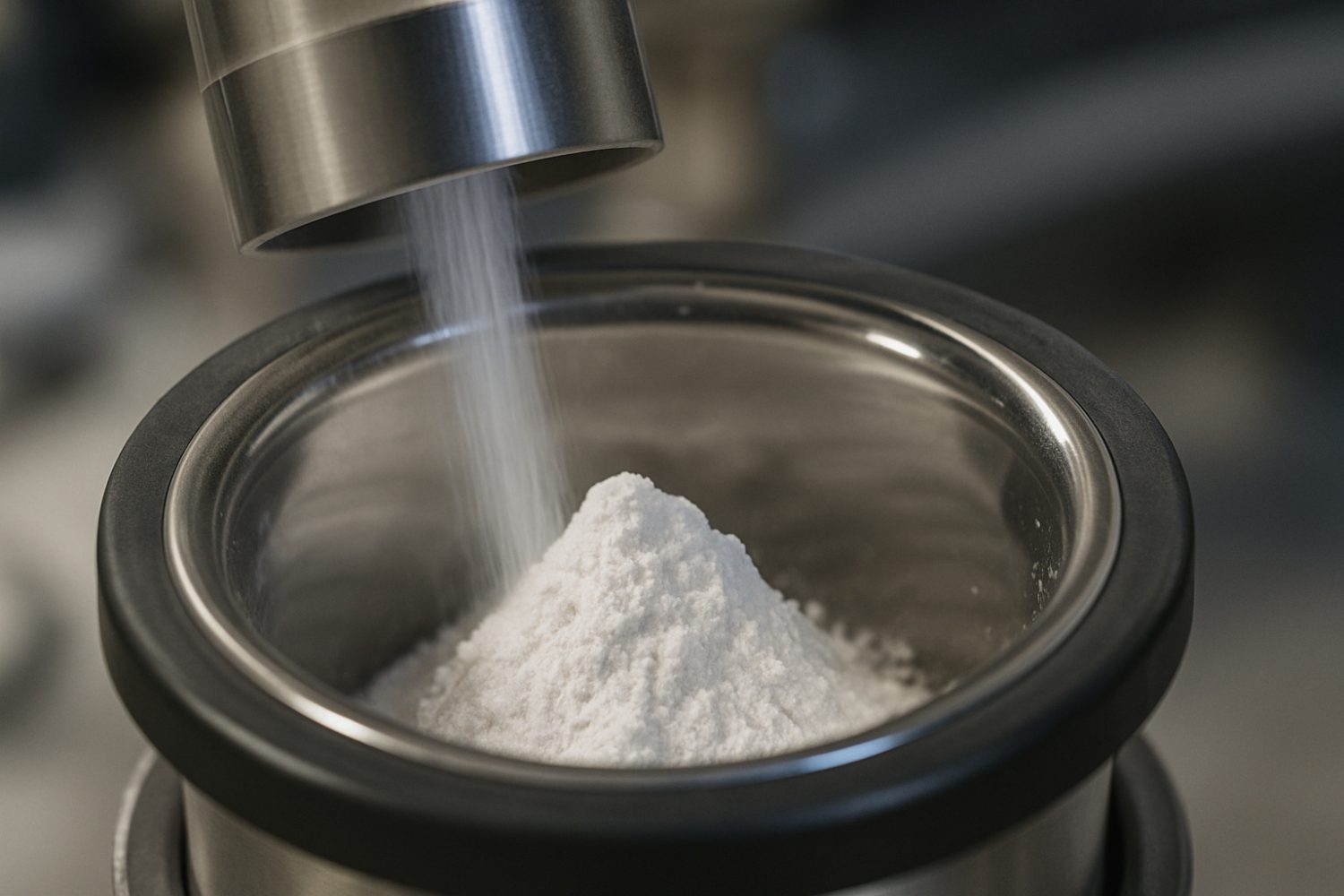
Now think of this simple example:
Pouring a jar of marbles vs. pouring a jar of fine sand. The marbles (like larger particles) roll out easily. The sand (like ultra-fine powders) pours slowly, may clump, and creates a dust cloud. That’s what happens in the die cavity too. Larger granules usually flow better—an advantage in fast production lines.
Compression: Getting the Particles to Stick
After the die is filled with powder, the press punch then applies pressure to compress it. Here, the role of particle size changes from influencing flow to impacting bonding.
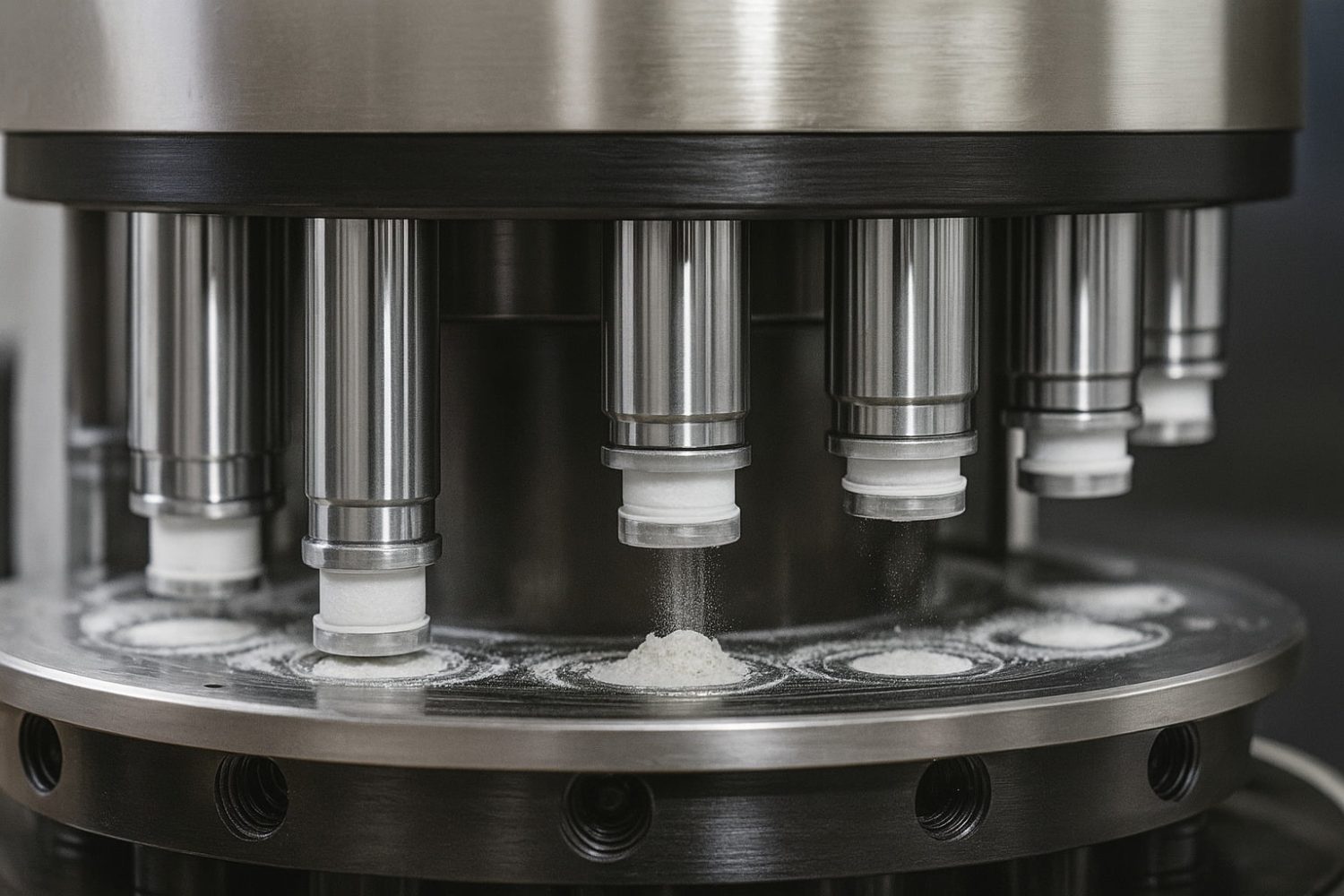
Smaller particles have more surface area, so they tend to bond better. They form stronger tablets because there’s more contact between particles.
Larger particles, on the other hand, have less contact area. Unless they fracture under pressure or contain binders, they may not stick together well. That can lead to:
- Weak tablets
- Cracking or breaking during handling
- Poor overall hardness
What’s the Ideal Particle Size for Tablets?
So, how big should your particles be? The ideal particle size depends on your formulation and the type of tablet press you’re using. But there are some general guidelines that help you stay on track.
In most cases, a mid-range particle size tends to work best. That means particles are big enough to flow smoothly, but small enough to compress well. Many experts suggest an average size in the 200 to 500 microns (µm) range.
In addition to average size, particle size distribution (PSD) is just as vital.
A good distribution:
- Fills gaps between larger granules with small particles
- Improves powder packing and bonding
- Reduces air pockets and voids
Here’s what a well-balanced distribution might look like:
- Most particles between 200–800 µm
- d90 (90% of particles under) around 800–900 µm
- d10 (10% of particles under) around 150 µm
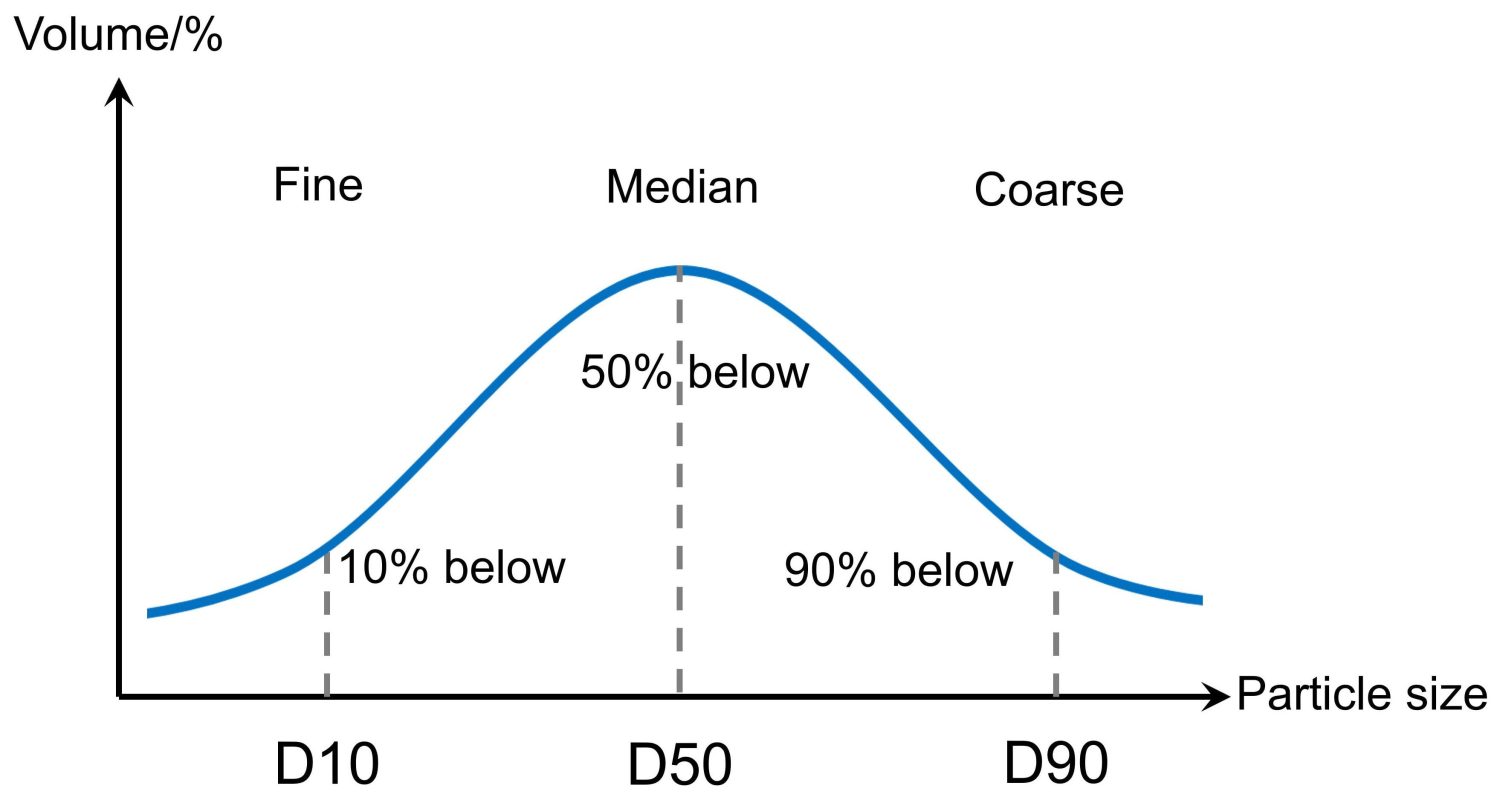
This gives you a nice, bell-shaped curve—no extremes, just a steady blend that flows and compresses well.
The Role of Granulation in Achieving the Ideal Particle Size
What if your powder is too fine, flows poorly, or refuses to compress properly? A granulator machine can help.
What Granulation Does
Granulation turns small powder particles into larger, more manageable granules. The process helps improve flow and compressibility of powders.
There are two main ways to do this:
- Wet Granulation: Applies a liquid binder to hold the particles together
- Dry Granulation: Compresses the powder (like slugging or roller compaction) and then breaks it into granules
Why It Matters
Granules behave much better in a tablet press than ultra-fine powders. They:
- Flow more easily into the die
- Create less dust
- Pack more uniformly
- Compress into stronger, more stable tablets
How Granulation Controls Particle Size
In wet granulation, things like binder amount, mixing time, and drying method affect how big your granules get.
In dry granulation, factors like compaction pressure and milling screen size help shape the final particle range.
Usually, there’s a milling step after granulation to break up any oversized lumps and remove fines. The end result? A batch of granules mostly within your target size range.
Particle Size Distribution: A Key Factor in Tablet Press Performance
Once your particle size and distribution are dialed in, tablet compression gets a lot easier.
Better Flow = Better Filling
Well-sized granules move easily through the tablet press’s feed system. That means each die cavity fills evenly, and every tablet gets the right amount of powder. When flow is smooth:
- The press runs at full speed without jamming
- You avoid issues like bridging in the hopper or uneven feeding
- Tablets come out with consistent weight and uniform API content
Compression Gets a Boost Too
- Small particles help fill gaps between larger ones, improving bonding
- Granules compress cleanly without trapping too much air
- You reduce the risk of defects like capping, lamination, or chipping
Less Dust, More Yield
Minimizing ultra-fine particles also means less dust in the compression zone. That’s good news for:
- Product yield (less material lost)
- Equipment cleanliness
- Operator safety
Smarter Machines Still Need the Right Blend
Modern tablet presses come loaded with features—pre-compression stages, adjustable feeder paddles, even vacuum systems. These tools help with tricky blends, but they can’t fix a poorly prepared powder.
When you feed the press with a consistent, well-granulated material:
- The equipment works more efficiently
- Settings are easier to dial in
- You get consistent tablet hardness easily
Final Thoughts
If you’ve been troubleshooting tablet defects or compression problems, don’t overlook the tiny stuff. Finding the ideal particle size for tableting isn’t just a detail.
Whether you’re still in the lab or scaling up for full production, take a close look at:
- Your particle size distribution
- Your granulation process
- Your tablet press capabilities
The right mix of all three is what makes consistent, high-quality tablets possible.
Need help optimizing your tablet production process?
We are always ready to chat about compression, granulation, and everything involved in tableting. Reach out any time!